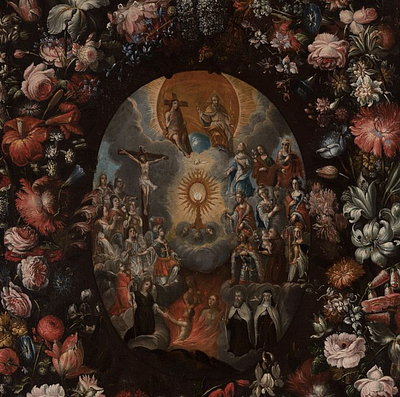Spanish school; first half of the XVII century. "Religious procession". Oil on canvas. Re-framed.
Lot 93
About Seller
Setdart Auction House
Carrer Aragó 346
Barcelona
Spain
Setdart Subastas was born in 2004 and is currently the first online art auction in Spain with solidity, prestige and reliability guaranteed by our more than 60,000 users. Setdart has a young, dynamic and enterprising team ready to successfully manage the purchase and sale of art works through custom...Read more
Estimate:
EUR€3,000 - EUR€4,000
$3,125 - $4,166.67
Absentee vs Live bid
Two ways to bid:
- Leave a max absentee bid and the platform will bid on your behalf up to your maximum bid during the live auction.
- Bid live during the auction and your bids will be submitted real-time to the auctioneer.
Bid Increments
| Price | Bid Increment |
|---|---|
| EUR€0 | EUR€10 |
| EUR€200 | EUR€25 |
| EUR€500 | EUR€50 |
| EUR€1,000 | EUR€100 |
| EUR€3,000 | EUR€200 |
| EUR€5,000 | EUR€500 |
| EUR€10,000 | EUR€1,000 |
| EUR€20,000 | EUR€2,000 |
| EUR€50,000 | EUR€5,000 |
About Auction
By Setdart Auction House
Jul 14, 2021
Set Reminder
2021-07-14 06:30:00
2021-07-14 06:30:00
America/New_York
Bidsquare
Bidsquare : OLD MASTERS
https://www.bidsquare.com/auctions/setdart-auction-house/old-masters-7202
Setdart Auction House sofia@setdart.com
Setdart Auction House sofia@setdart.com
- Lot Description
Spanish school; first half of the XVII century. "Religious procession". Oil on canvas. Re-framed. Presents scuffs, scrapes, tears, restorations and frame of the twentieth century, following models of the seventeenth century. Size: 163 x 207 cm; 178 x 224 cm (frame). In this work the author presents a procession of religious, in which two characters stand out, one of them located on the far right, and another in the central area. These characters distort the regularity of the religious procession and present themselves in an antagonistic way to the spectator, that is to say, while one of them is luxuriously dressed, the other, however, looks like a peasant. This dichotomy between the two, invites the viewer to reflect on the income of the church, its management and who directs it. Since the character of great wealth is placed in the center, while the other is the person who leads the way of the monks, which by their white robes could be identified as Carthusian. Spanish Baroque painting is one of the most authentic and personal examples of art, because its conception and form of expression arose from the people and the deepest feelings that nestled in it. With the economy of the State broken, the nobility in decline and the high clergy burdened with heavy taxes, it was the monasteries, parishes and confraternities of clerics and laymen who promoted its development, with the works sometimes being financed by popular subscription. Sculpture was thus compelled to embody the prevailing ideals in these environments, which were none other than religious ones, at a time when the counter-reformist doctrine demanded from art a realistic language so that the faithful would understand and identify with what was represented, and an expression endowed with an intense emotional content to increase the fervor and devotion of the people. The religious subject is, therefore, the preferred theme of Spanish painting of this period, which in the first decades of the century starts from a priority interest in capturing the natural, to progressively intensify throughout the century the expression of expressive values, which is achieved through the movement and variety of gestures, the use of light resources and the representation of moods and feelings.
- Shipping Info
-
In-house shipping available. Please inquire at admin@setdart.com.
-
- Buyer's Premium



 EUR
EUR CAD
CAD AUD
AUD GBP
GBP MXN
MXN HKD
HKD CNY
CNY MYR
MYR SEK
SEK SGD
SGD CHF
CHF THB
THB















